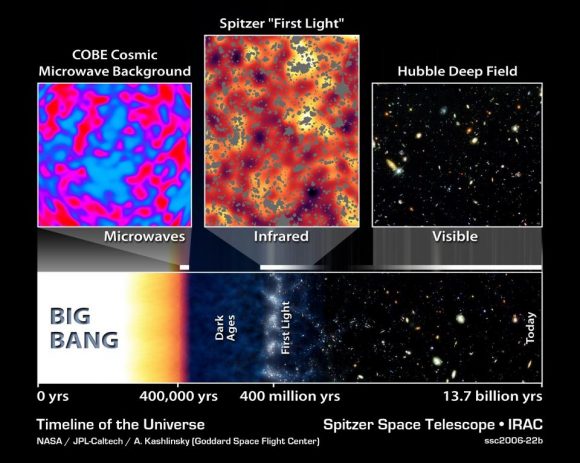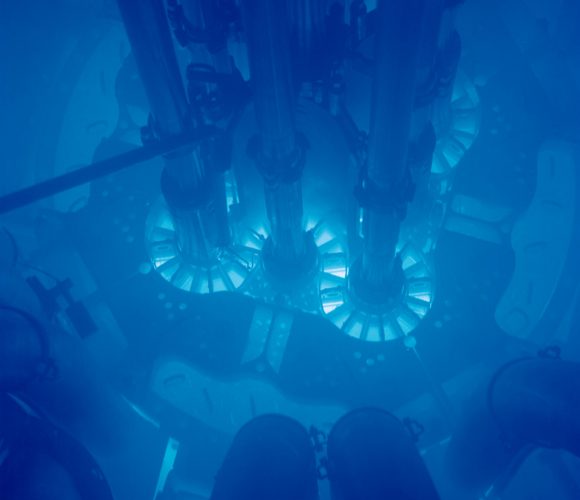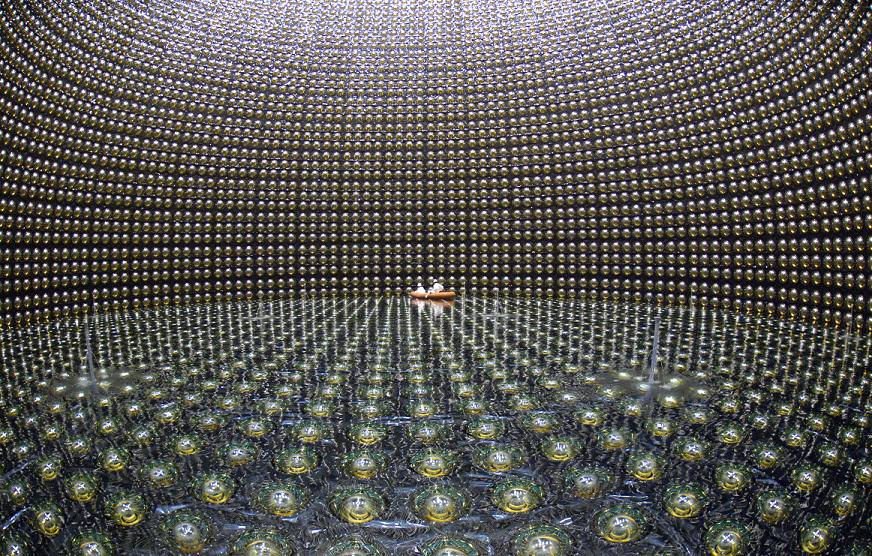I really don’t know how to introduce this article. Neutrinos are elementary particles and are electrically neutral. They are produced by numerous cosmological events. Trees, well, we all know what they are and in a recent paper, scientists believed it may be possible to use entire forests as neutrino detectors! I was a bit sceptical when I read the paper but its an interesting concept and certainly trees have been used as broadband antennae so perhaps, well its a fascinating concept.
Continue reading “Could Forests Become Ultrahigh Energy Neutrino Detectors? “We’re One Step Closer to Knowing Why There’s More Matter Than Antimatter in the Universe
The Standard Model of particle physics has been the predominant means of explaining what the basic building blocks of matter are and how they interact for decades. First proposed in the 1970s, the model claims that for every particle created, there is an anti-particle. As such, an enduring mystery posed by this model is why the Universe can exist if it is theoretically made up of equal parts of matter and antimatter.
This seeming disparity, known as the charge-parity (CP) violation, has been the subject of experiments for many years. But so far, no definitive demonstration has been made for this violation, or how so much matter can exist in the Universe without its counterpart. But thanks to new findings released by the international Tokai-to-Kamioka (T2K) collaboration, we may be one step closer to understanding why this disparity exists.
First observed in 1964, CP violation proposes that under certain conditions, the laws of charge-symmetry and parity-symmetry (aka. CP-symmetry) do not apply. These laws state that the physics governing a particle should be the same if it were interchanged with its antiparticle, while its spatial coordinates would be inverted. From this observation, one of the greatest cosmological mysteries emerged.
If the laws governing matter and antimatter are the same, then why is it that the Universe is so matter-dominated? Alternately, if matter and antimatter are fundamentally different, then how does this accord with our notions of symmetry? Answering these questions is not only important as far as our predominant cosmological theories go, they are also intrinsic to understanding how the weak interactions that govern particles work.
Established in June of 2011, the international T2K collaboration is the first experiment in the world dedicated to answering this mystery by studying neutrino and anti-neutrino oscillations. The experiment begins with high-intensity beams of muon neutrinos (or muon anti-neutrinos) being generated at the Japan Proton Accelerator Research Complex (J-PARC), which are then fired towards the Super-Kamiokande detector 295 km away.
This detector is currently one of the world’s largest and most sophisticated, dedicated to the detection and study of solar and atmospheric neutrinos. As neutrinos travel between the two facilities, they change “flavor” – going from muon neutrinos or anti-neutrinos to electron neutrinos or anti-neutrinos. In monitoring these neutrino and anti-neutrino beams, the experiment watches for different rates of oscillation.
This difference in oscillation would show that there is an imbalance between particles and antiparticles, and thus provide the first definitive evidence of CP violation for the first time. It would also indicate that there are physics beyond the Standard Model that scientists have yet to probe. This past April, the first data set produced by T2K was released, which provided some telling results.

As Mark Hartz, a T2K collaborator and the Kavli IPMU Project Assistant Professor, said in a recent press release:
“While the data sets are still too small to make a conclusive statement, we have seen a weak preference for large CP violation and we are excited to continue to collect data and make a more sensitive search for CP violation.”
These results, which were recently published in the Physical Review Letters, include all data runs from between January 2010 to May 2016. In total, this data comprised 7.482 x 1020 protons (in neutrino mode), which yielded 32 electron neutrino and 135 muon neutrino events, and 7.471×1020 protons (in antineutrino mode), which yielded 4 electron anti-neutrino and 66 muon neutrino events.
In other words, the first batch of data has provided some evidence for CP violation, and with a confidence interval of 90%. But this is just the beginning, and the experiment is expected to run for another ten years before wrapping up. “If we are lucky and the CP violation effect is large, we may expect 3 sigma evidence, or about 99.7% confidence level, for CP violation by 2026,” said Hartz.
If the experiment proves successful, physicists may finally be able to answer how it is that the early Universe didn’t annihilate itself. It is also likely help to reveal aspects of the Universe that particle physicists are anxious to get into! For it here that the answers to the deepest secrets of the Universe, like how all of its fundamental forces fit together, are likely to be found.
Further Reading: Kavli IMPU, Physical Review Letters
Detector With Real-time Alert Capability Waits Patiently For Supernova Neutrinos

Under Mount Ikeno, Japan, in an old mine that sits one-thousand meters (3,300 feet) beneath the surface, lies the Super-Kamiokande Observatory (SKO). Since 1996, when it began conducting observations, researchers have been using this facility’s Cherenkov detector to look for signs of proton decay and neutrinos in our galaxy. This is no easy task, since neutrinos are very difficult to detect.
But thanks to a new computer system that will be able to monitor neutrinos in real-time, the researchers at the SKO will be able to research these mysteries particles more closely in the near future. In so doing, they hope to understand how stars form and eventually collapse into black holes, and sneak a peak at how matter was created in the early Universe.
Neutrinos, put simply, are one of the fundamental particles that make up the Universe. Compared to other fundamental particles, they have very little mass, no charge, and only interact with other types of particles via the weak nuclear force and gravity. They are created in a number of ways, most notably through radioactive decay, the nuclear reactions that power a star, and in supernovae.

In accordance with the standard Big Bang model, the neutrinos left over from the creation of the Universe are the most abundant particles in existence. At any given moment, trillions of these particles are believed to be moving around us and through us. But because of the way they interact with matter (i.e. only weakly) they are extremely difficult to detect.
For this reason, neutrino observatories are built deep underground to avoid interference from cosmic rays. They also rely on Cherenkov detectors, which are essentially massive water tanks that have thousands of sensors lining their walls. These attempt to detect particles as they are slowed down to the local speed of light (i.e. the speed of light in water), which is made evident by the presence of a glow – known as Cherenkov radiation.
The detector at the SKO is currently the largest in the world. It consists of a cylindrical stainless steel tank that is 41.4 m (136 ft) tall and 39.3 m (129 ft) in diameter, and holds over 45,000 metric tons (50,000 US tons) of ultra-pure water. In the interior, 11,146 photomultiplier tubes are mounted, which detect light in the ultraviolet, visible, and near-infrared ranges of the electromagnetic spectrum with extreme sensitivity.
For years, researchers at the SKO have used the facility to examine solar neutrinos, atmospheric neutrinos and man-made neutrinos. However, those that are created by supernovas are very difficult to detect, since they appear suddenly and difficult to distinguish from other kinds. However, with the newly-added computer system, the Super Komiokande researchers are hoping that will change.

As Luis Labarga, a physicist at the Autonomous University of Madrid (Spain) and a member of the collaboration, explained in a recent statement to the Scientific News Service (SINC):
“Supernova explosions are one of the most energetic phenomena in the universe and most of this energy is released in the form of neutrinos. This is why detecting and analyzing neutrinos emitted in these cases, other than those from the Sun or other sources, is very important for understanding the mechanisms in the formation of neutron stars –a type of stellar remnant– and black holes”.
Basically, the new computer system is designed to analyze the events recorded in the depths of the observatory in real-time. If it detects an abnormally large flows of neutrinos, it will quickly alert the experts manning the controls. They will then be able to assess the significance of the signal within minutes and see if it is actually coming from a nearby supernova.
“During supernova explosions an enormous number of neutrinos is generated in an extremely small space of time – a few seconds – and this why we need to be ready,” Labarga added. “This allows us to research the fundamental properties of these fascinating particles, such as their interactions, their hierarchy and the absolute value of their mass, their half-life, and surely other properties that we still cannot even imagine.”

Equally as important is the fact this system will give the SKO the ability to issue early warnings to research centers around the world. Ground-based observatories, where astronomers are keen to watch the creation of cosmic neutrinos by supernova, will then be able to point all of their optical instruments towards the source in advance (since the electromagnetic signal will take longer to arrive).
Through this collaborative effort, astrophysicists may be able to better understand some of the most elusive neutrinos of all. Discerning how these fundamental particles interact with others could bring us one step closer to a Grand Unified Theory – one of the major goals of the Super-Kamiokande Observatory.
To date, only a few neutrino detectors exist in the world. These include the Irvine-Michigan-Brookhaven (IMB) detector in Ohio, the Subdury Neutrino Observatory (SNOLAB) in Ontario, Canada, and the Super Kamiokande Observatory in Japan.
Further Reading: SINC


